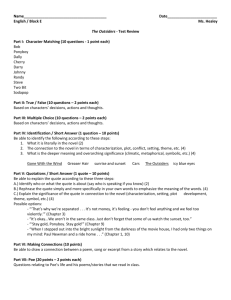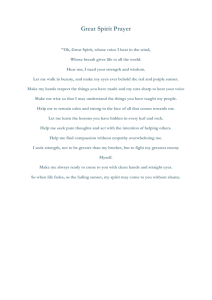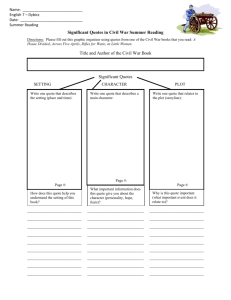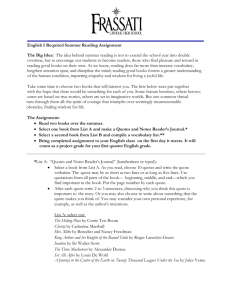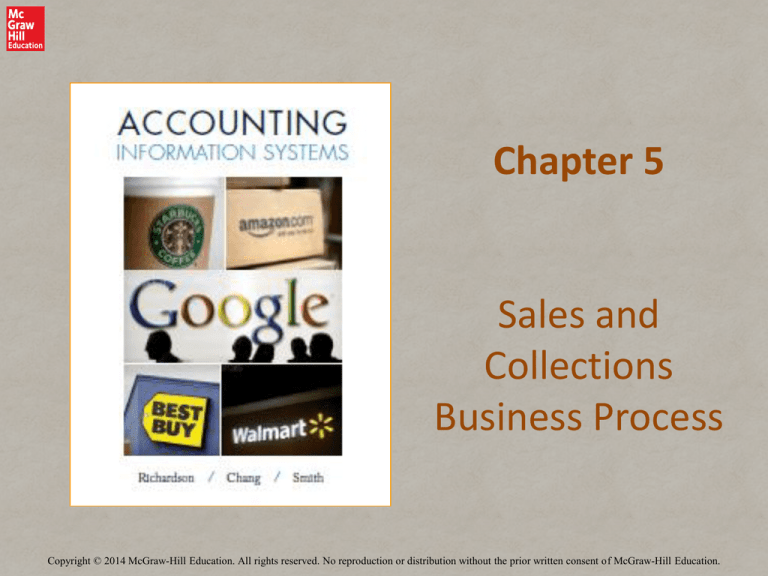
Chapter 5
Sales and
Collections
Business Process
Copyright © 2014 McGraw-Hill Education. All rights reserved. No reproduction or distribution without the prior written consent of McGraw-Hill Education.
Learning Objectives
• LO#1 Describe the business activities that comprise the
sales and collection process
• LO#2 Develop an activity model of the sales and
collection process
• LO#3 Understand and apply different activity modeling
options
• LO#4 Develop business rules to implement controls for
the sales and collection process
• LO#5 Develop UML Class Diagrams for the sales and
collection process
• LO#6 Implement a relational database from the UML
Class Diagram of the sales and collection process
• LO#7 Use multiplicities to implement foreign keys in
relational tables
5-2
LO# 1
Review of Sales and Collections Accounting
5-3
LO# 2
Sunset Graphics Continuing Example
• Sunset graphics design and sell
–
–
–
–
signs and banners,
lettering and vinyl graphics for vehicles and boats,
corporate promotional items, and
silk-screened t-shirts and embroidered gear, among
other products.
5-4
LO# 2
Sunset Graphics Sales Process Description
• Sunset prepares a quote that carefully describes
the products and services to be provided to the
customer
• Customer places the order for all or part of the
quoted products and services
• Sunset orders any products not in inventory from
their suppliers (outside the sales process)
• Sunset applies graphics
• Sunset delivers the products to the customer
• Sunset bills the customer and collects payment
5-5
LO# 2
Basic BPMN activity model
5-6
LO# 3
BPMN Model Refinement
Collaboration Sales
Activity Model
5-7
LO# 3
Further BPMN Model Refinement
Collaboration Sales Activity Model emphasizing the CHOREOGRAPHY –
message flows between pools, since Sunset is not interested in the Customers
activities. To clarify the diagram, the message flows should be labeled, e.g.,
“quote information” for the first message flow.
5-8
LO# 3
More BPMN Model Refinement
Considering EXCEPTIONS to the process. Shows the process flow when the
supplier does not have the products necessary to fulfill the customer’s order.
Sub-process represents the PURCHASING activities without the detail; the
INTERMEDIATE ERROR EVENT shows exception flow.
5-9
LO# 4
Business Rules
• Business rules help ensure that information
systems operate in a consistent and effective
manner to achieve organizational objectives.
• Business rules are constraints on the process.
• Business rules implement control activities, such
as
– Approvals, authorizations, verifications, and reconciliations
– Reviews of operating performance
– Security of assets and segregation of duties
5-10
LO# 4
Establishing Business Rules for Sunset’s Sales
• Define objectives for each important business
event
• Use the BPMN activity diagram to identify
important business events
• Define constraints on each event
– What people/employees can do.
– What information is available and not available
– What the information system should do
5-11
Sample Business Rules
Process Steps
Intention
Partner
Authority/Action
Access Controls
Application Controls
Provide Quote Provide
quotes
promptly and
accurately
Partner must provide
quote within 1 business
day of request; Manager
must approve quotes >
$5,000
Partners preparing
quotes cannot
modify established
product and service
prices
System must provide
quote number
control, default
values, range and limit
checks, and create
audit trail
Receive Order
Partner must record
order within one hour of
receipt; Manager must
approve orders > $5,000;
Credit manager must
approve credit order >
$1,000
Partners accepting
orders cannot
modify established
product and service
prices; Partners
accepting orders
cannot approve
request for
customer credit >
$1,000.
System must provide
order number control,
default values, range
and limit checks, and
create audit trail;
system links quote to
order
Record order
promptly and
accurately;
ensure
customer
credit is
authorized
5-12
LO# 5
Sunset Graphics Structure Models
• The primary purpose of an UML model of the
sales and collection process is to create a
blueprint for the development of a relational
database to support the collection, aggregation,
and communication of process information.
• To develop UML class diagrams, the REA
framework (resources, events, and agents) is a
proven approach to describing business
processes in a way that meets both accounting
and broad management information
requirements.
5-13
Sunset’s Quotes - Defining Business
Relationships
LO# 5
1. Each Sunset Partner may participate in a
minimum of zero Quotes and a maximum of
many Quotes, but each Quote involves only
one Sunset Partner
2. Each Customer may participate in zero to
many Quotes and each Quote is prepared for
only one Customer
3. Each Quote specifies prices and quantities for
at least one product
5-14
LO# 5
Modeling Sunset’s Quotes
5-15
LO# 5
Adding the Order Event
4. Each quote can result in a minimum of 0 orders and a maximum of many
orders. Each order may related to 0 or 1 quote (some orders don’t have quotes).
5-16
LO# 5
Adding Cash Receipts
5. Each order can be either paid or unpaid.
6. Each cash receipt is deposited into one bank account
5-17
LO# 5
Type Images for Categorical Information
• Type images apply guidelines, constraints, and
descriptive information to their resources, events,
and agents to help manage the business process
• Type images also support summarization of the
economic activity to support management’s
information requirements
• For Sunset Graphics, type images allow
– Product categorization
– Order status summary
– Assignment of partners to manage product categories
5-18
LO# 5
Adding Type Images to the Model
7. Orders (and Sales) can be summarized by product category.
8. Sunset partners can be assigned to manage on or more product categories.
5-19
LO# 6
UML Class Models Support DB Planning
• The database will contain one table for each
class plus one table to support each many-tomany relationships
• Multiplicities indicate location of foreign keys
• Multiplicities indicate linking tables
5-20
LO# 6
Linking
Tables
This model would result in a database with 9 tables for classes and 2 linking
tables.
5-21
LO# 7
Posting Foreign Keys Example
1. Customer Number is posted in the Quote table as a foreign key.
2. Customer Number is posted in the Order table as a foreign key.
3. Quote Number is posted in the Order table as a foreign key.
5-22
Rule of Thumb
POST TOWARD THE * and AWAY FROM THE 1
The primary key of Customer should be a foreign
key in the Sale Table!
5-23
LO# 6
Resulting DB Tables and Relationships
5-24

